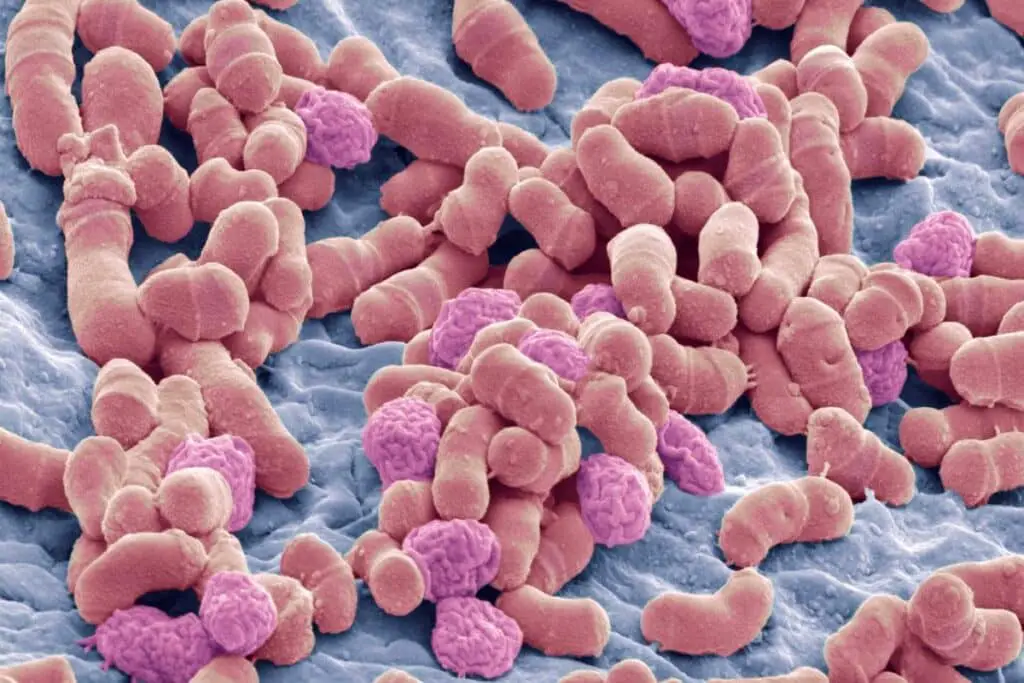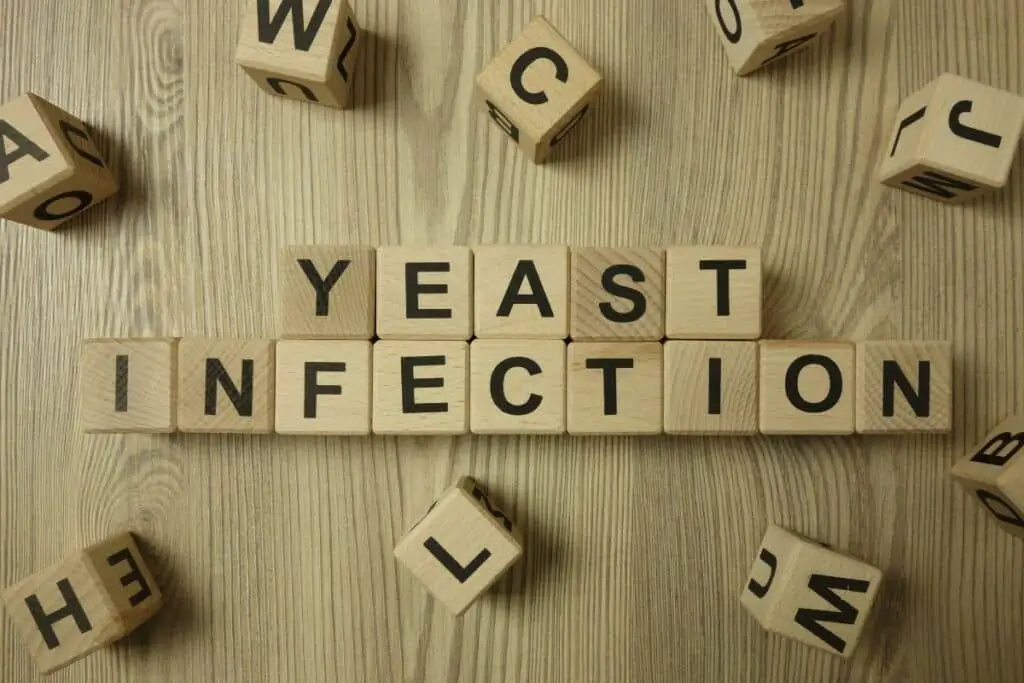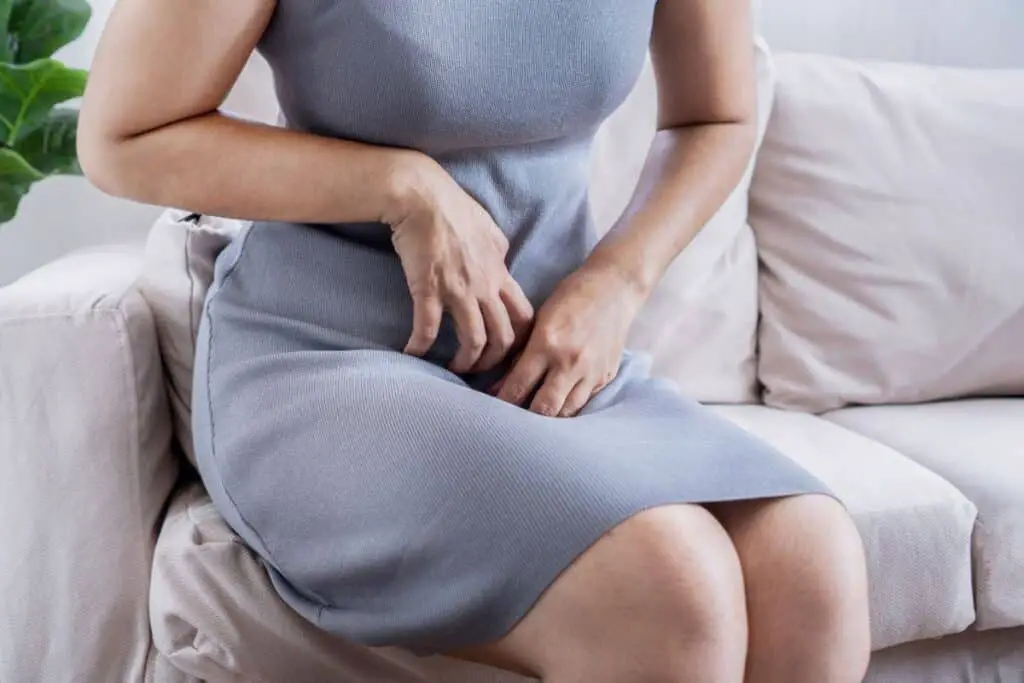Picture this:
You’re going about your day, and suddenly, you feel an intense itching sensation in the vaginall region. It’s uncomfortable, it’s annoying, and it’s just not going away!
Well, you might be dealing with a yeast infection!
But fear not, because I’ll explore the causes, symptoms, and treatments for vaginal yeast infections so you can feel confident and informed about your health.
Yeast infections are incredibly common, with up to 75% of women experiencing at least one in their lifetime. Approximately 5% of women have what is known as recurrent vulvovaginal candidiasis which simply means that these women get 4 or more vaginal yeast infections in one year. Recurrent vulvovaginitis is more common in women with weak immune systems such as those suffering from HIV or diabetes, but it can also occur in otherwise healthy women.
The Causes of Vaginal Yeast Infection
Yeast infections are caused by an overgrowth of a fungus called Candida. Candida Albicans is the most common species of Candida that causes these infections. Candida usually lives peacefully in small amounts in the vagina. But when things get out of balance, a yeast infection may occur.
The Symptoms of Vaginal Yeast Infection
Itching is one of the main symptoms of a yeast infection. You may experience, soreness, pain and burning during sex and urination and this is mostly because the yeast infection causes the external vaginal region to become swollen and irritated.
You might also notice a thick, white discharge that’s odorless and reminds you of cottage cheese. Fortunately, Yeast infections are usually not serious, but they can definitely put a damper on your daily life.
The Risk Factors of Vaginal Yeast Infection
One of the main culprits behind yeast infections is hormonal changes. Pregnancy, menstruation, menopause, and even birth control pills can mess with the delicate balance of vaginal flora, making it a paradise for yeast to flourish. In fact, many women get vaginal yeast infections the week before their menstruation due to the hormonal changes.
Did you know that the use of antibiotics is a common trigger for vaginal yeast infections? Antibiotics are great at fighting off bacterial infections, but they can’t distinguish between good and bad bacteria. So they also wipe out those friendly bacteria that keep the yeast in check, thus causing a yeast infection.
While yeast infections are not sexually transmitted, sexual activity can sometimes contribute to the development of a yeast infection. This is because sexual activity can cause micro-tears in the vaginal tissue, which can create an environment that is more conducive to the growth of Candida. Plus, the use of certain types of lubricants or condoms can also contribute to the development of a yeast infection.
A weakened immune system is another risk factor. Stress, lack of sleep, certain medication, poor nutrition including a diet that’s high in sugars can contribute to an immune system that’s not at its best, giving Candida the upper hand.

The Diagnosis of Vaginal Yeast Infection
Diagnosing a yeast infection is usually based on your reported symptoms and physical examinations, but sometimes, healthcare providers order lab tests to confirm it and to ensure that you don’t have a sexually transmitted infection or even a Urinary tract infection.
Vaginal swabs, culture tests, and even blood tests might be part of the process. Similar to yeast infections, Sexually Transmitted Diseases can also cause irritation, itching and discharge. Leave a comment below if you’d like me to discuss the differences between a yeast infection and a sexually transmitted infection.
Treatment Options for Vaginal Yeast Infection
Now, let’s talk about the good stuff—the treat ment of yeast infections!
Some cases of yeast infections may go away on their own. However, if you suspect you have a yeast infection, don’t wait around.
When it comes to fighting off yeast infections, antifungal medications such as Miconazole (monistat), nystatin, clotrimazole, terconazole are the superheroes! They can be taken orally or applied topically, or both depending on the severity of the infection.
Vaginal suppositorities are also available. If you are absolutely sure that you have a yeast infection and your symptoms are mild to moderate, many of these medications are available over the counter.
But remember, always complete the full course of treatment, even if your symptoms improve before the medication is finished. This will prevent the infection from making an unwelcome comeback.
For the best results, it’s always best to avoid sexual activity during treatment. Did you know that studies show that medicated creams or the oral pill Fluconazole work for more than 90 % of yeast infections?
However, here are some examples of when it’s particularly important to see your healthcare provider:
If you have never had a yeast infection before, or if you are experiencing symptoms that are different from those of previous yeast infections, if you are pregnant, have a weakened immune system, or have recurring yeast infections (more than four in a year),
If your symptoms do not improve with over-the-counter treatment, or if they worsen or recur after treatment, it is also important to see your healthcare provider for further evaluation and treatment.
For those who prefer a more natural approach, there are some home remedies you can try, but remember to consult a healthcare provider before going down that road.
Plain, unflavored Greek yogurt contain probiotics that may prevent the growth of Candida. Oral and probiotic suppositories may be helpful. There is also some evidence that garlic, coconut oil and tee tree oil can reduce Candida levels. However, research findings vary regarding the effectiveness of this approach.
Prevention is the key to staying one step ahead of yeast infections!

Preventing Vaginal Yeast Infections
Proper hygiene is essential—wipe from front to back NOT back to front when you use the bathroom. This will prevent you from transmitting bacteria from the anus to the vagina.
Avoid douching or trying to clean out the vagina. This disrupts the normal pH inside the vagina and causes an overgrowth of yeast. Remember, cleaning the inside of your vagina with soap is like cleaning your mouth with soap. The vagina does a great job of cleaning itself out.
Avoid heavily fragrances bath products and laundry detergent. Change your pads and tampons regularly.
Ditch those tight, synthetic clothes in favor of breathable cotton underwear. A healthy diet, low in sugars and refined carbs, and high in probiotics from yogurt and other sources can also help maintain a balanced vaginal flora.
Remember that fungi loves humidity, so avoid sitting around in wet or sweaty clothing for prolonged periods.
What’s your best tip for preventing a yeast infection, let me know in the comments below.
Final Words on Vaginal Yeast Infection
Remember, knowledge is power, and knowing the causes, symptoms, and treatment options can help you take control of your health and well-being.
In the words of Jillian Michaels: At the end of the day, your health is your responsibility.
Until next time, stay healthy, stay informed, and become a better version of yourself! 🌟
But hey, before you go – I have something else you might be interested in – my article on Kegel exercises. Check it out if you want to strengthen your pelvic floor and improve your intimate experiences.
Related Topics:
Kegel Exercises for Women: Strengthen Your Pelvic Floor Muscles








